Stairlift Buying Guide
When mobility becomes a challenge, whether due to injury, aging, or a chronic condition, everyday tasks like using the stairs can become a daily risk.
For anyone unable to invest in a new home or whose goal is to stay in their home, stairlifts offer a safe and reliable solution for moving between floors within their home, helping to prevent injuries and either restore or preserve independence.
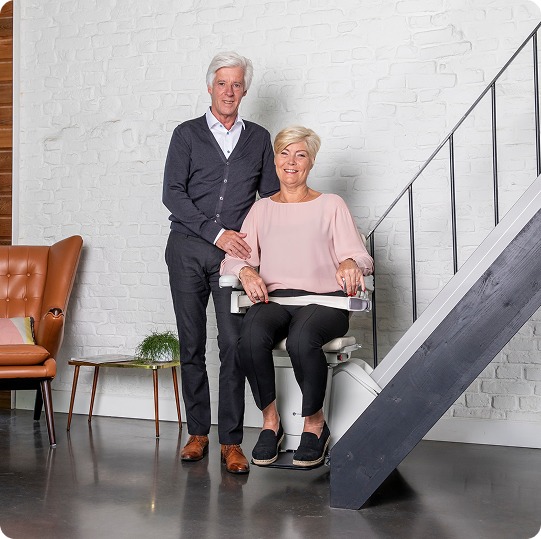
Why (and When) a Stairlight Might Be Right for You
Stairlifts aren’t just for one type of user—they serve a wide range of needs. Whether you’re recovering from an injury, living with a chronic condition, or planning to age comfortably at home, a stairlift can allow you both independence and safety.
Falls are a leading cause of injuries and deaths among older adults. In 2021, unintentional falls resulted in 38,742 deaths among adults aged 65 and older in the United States. A stairlift provides a secure way to move between floors without the risk of tripping or slipping. For older adults even with full mobility, a stairlift should be considered with mobility issues like osteoarthritis, osteoporosis, sarcopenia, joint pain, back pain, Parkinson’s Disease, Peripheral Nueropathy, Chronic Obstructive Pulmonary Disease (COPD), Peripheral Artery Disease (PAD), vertigo, cataracts, or even side effects from medications like dizziness or drowsiness that could affect balance or coordination navigating stairs.
What Are The Different Types of Stairlifts?
Stairlifts come in various models to suit different user needs and staircase types:
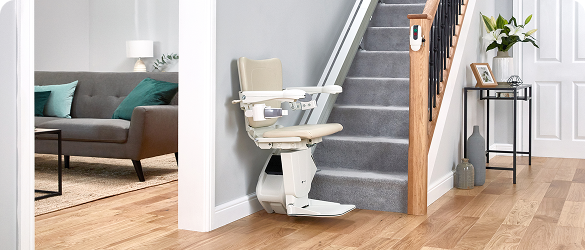
Straight Stairlifts
Designed for stairs that run in a straight line with no curves or landings. These are the most common type of staircases and are typically the easiest type of stairlift to install.
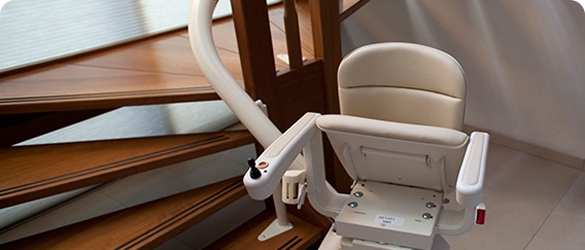
Curved Stairlifts
Custom-built to fit staircases with turns, corners, or intermediate landings. While they require a longer installation time and a special layout, they offer seamless mobility across more complex stair layouts.
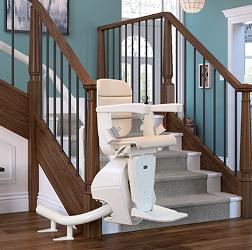
Indoor Stairlifts
Made for use inside the home, these stairlifts are the most customizable with full power feature options available.
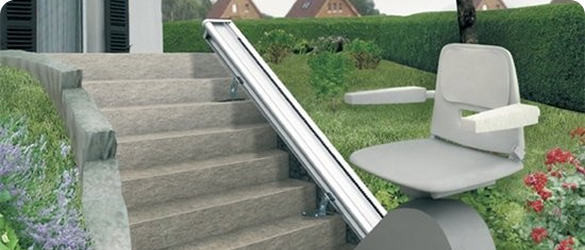
Outdoor Stairlifts
Perfect for porches, decks, or outdoor steps. However, they do face unique challenges. Exposure to weather can lead to wear and tear, affecting performance and longevity. Additionally, they do not come with power features, like power footrest or power swivel.
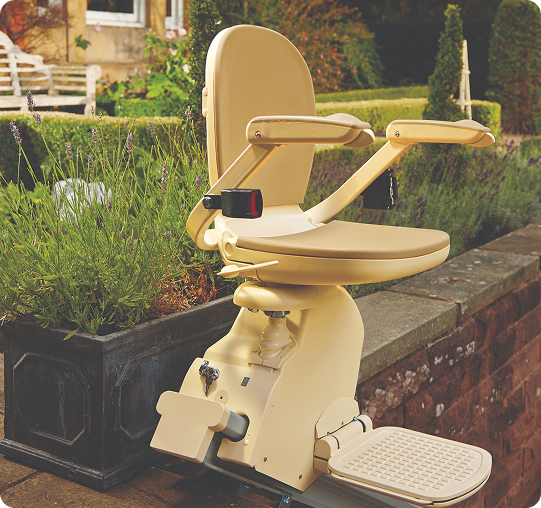
Outdoor Stairlift Considerations
Outdoor stairlifts are built with weather-resistant materials, but they still require regular maintenance. Rain, snow, and debris can damage the system over time. Fortunately, there are ways to extend their life:
- Use protective covers when not in use
- Regularly clean the tracks and seat
- Schedule routine maintenance to ensure safe operation year-round
What Are The Key Features To Look For in a Stairlift?
Choosing a stairlift isn’t just about getting from point A to point B—it’s about safety, comfort, and convenience. Today’s stairlifts offer a wide range of features designed to meet individual needs.
Essential Safety Features
These are must-haves for reliable and secure operation:
- Seatbelts: Secure the user in place during travel, helping prevent sliding or falls, especially on steeper staircases.
- Obstruction Sensors: Automatically stop the lift if something is in its path—protecting pets, children, and objects left on the stairs.
- Emergency Stop Buttons: Allow for immediate halting of movement in the event of an emergency or malfunction.
Optional Features for Added Comfort and Ease
These enhancements make daily use more intuitive and manageable:
- Swivel Seats: Rotate the seat at the top or bottom of the stairs for easier and safer entry/exit, reducing twisting and fall risks.
- Remote Controls: Allow users or caregivers to call or send the lift to another level—ideal in multi-user households.
- Folding Seats, Rails, and Footrests: Great for narrow staircases, these features tuck the lift away when not in use, maintaining clear walking paths for others.
How Do I Match the Stairlift to My Mobility Needs?
Not all stairlifts are created equal, and neither are the mobility needs of those who use them. Understanding your specific physical and cognitive abilities is crucial to selecting the right solution.
Sitting Balance
Can the user sit upright without leaning to one side or sliding forward? If not, standard seats may be unsafe. In these cases, consider:
- High-back seats for full trunk support
- Adjustable armrests and firm seat bases for posture stability
- Chest harnesses or lap belts for additional security. If sitting is not possible at all, such as with advanced use of a power wheelchair, a vertical platform lift may be more appropriate than a stairlift.
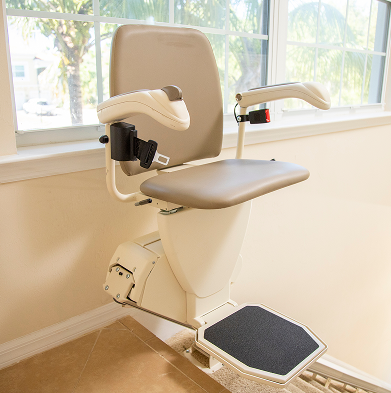
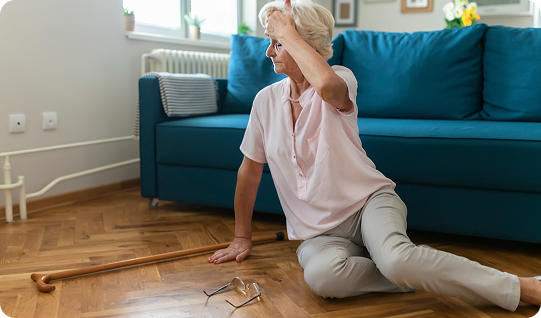
Fall Risk & Mobility Status
Assessments like gait analysis, balance tests, or sit-to-stand evaluations help determine whether stair transfers are safe or if they’re likely to become harder over time. Conditions like Parkinson’s Disease (PD), Amyotrophic Lateral Sclerosis (ALS), or degenerative joint disease (DJD) may necessitate frequent reassessments.
Transfer Safety
Can the user transfer onto the lift safely, either independently or with assistance? Consider:
- Whether they use a walker, cane, or transfer board
- Cognitive ability to follow safety instructions
- Whether caregiver support is required. If there's doubt, a professional evaluation or caregiver report can help clarify the best path forward.
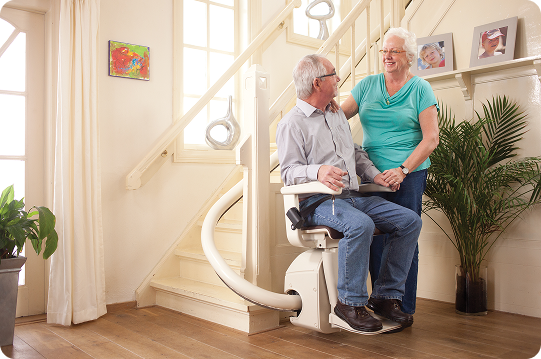
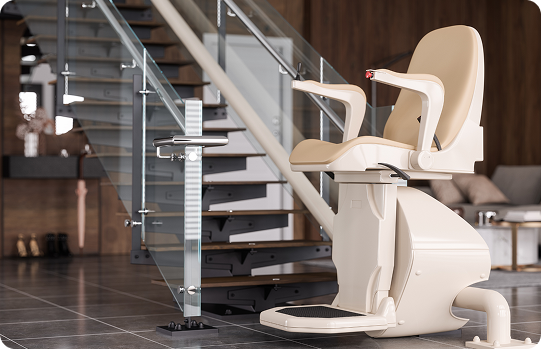
Weight & Height
Comfort and safety depend on matching the seat and system to the user's body:
- Ensure weight is within the lift's capacity. Bariatric models are available for higher weight needs.
- Check that the seat depth supports the thighs properly, and that footrests are at the right height to avoid feet dangling or legs cramping.
Caregiver Involvement
If the user isn’t fully independent, stairlift operation must account for two people:
- Wider seats or dual-user options may be required.
- Remote operation may be essential if the caregiver needs to control the lift.
- In tight stairwells, turning space and positioning need special attention.

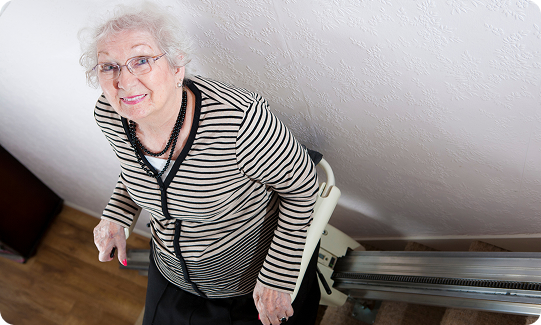
Diagnosis & Long-Term Needs
Stairlifts aren’t just for one type of user—they serve a wide range of needs. Whether you’re recovering from an injury, living with a chronic condition, or planning to age comfortably at home, a stairlift can allow you both independence and safety.
Progressive conditions - like Parkinson’s, COPD, ALS, or Multiple Sclerosis - often require planning ahead:
- Will transfers become harder over time?
- Is a stairlift a temporary solution or will a platform lift be needed down the road? Planning now can save time, money, and stress later by choosing a system that adapts to the user.
How Much Does a Stairlift Cost?
The cost of a stairlift can vary depending on several key factors. While the brand does play a role, most reputable stairlift brands are priced within a few hundred dollars of each other when comparing similar models. The more significant price differences come from the type of stairlift and the complexity of the installation.
Stairlift Types and Costs
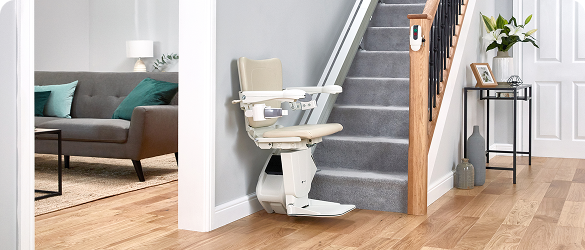
Straight Stairlifts
Starting at approximately $4,000+
These are the most common and affordable type of stairlifts, designed for staircases without curves or landings.
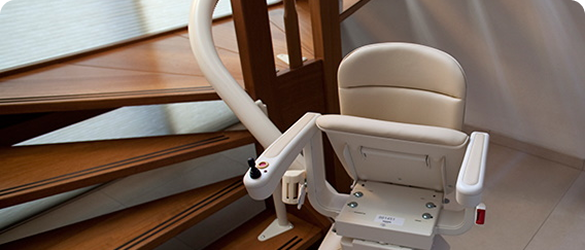
Curved Stairlifts
Starting at approximately $12,000+
These are custom-built to fit staircases with turns, curves, or intermediate landings, which significantly increases the cost.
Indoor and outdoor versions generally follow these same price ranges, depending on whether the staircase is straight or curved.
Pro tip: In some cases, we’ve helped clients reduce costs by installing multiple straight stairlifts with a walking transfer across a landing, rather than a custom curved stairlift. This solution can be more economical, but it depends on the user’s mobility and medical prognosis.
Choosing with Confidence
A stairlift is more than a mobility aid; it’s an investment in quality of life. By understanding the features, your physical condition, and your home layout, you can choose a stairlift that not only fits your stairs but also fits you.
Need help deciding? A certified aging in place specialist (CAPS) or occupational therapist can guide you through the options and ensure you find the safest, most effective solution.
